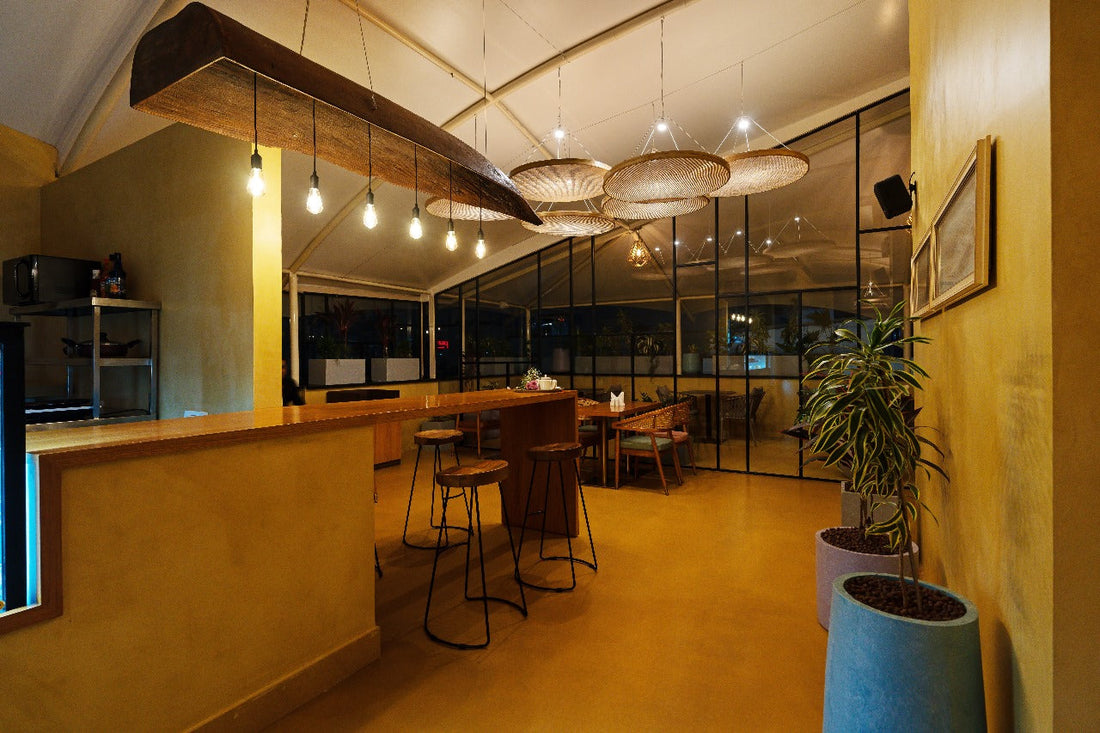
Why the Future of Lighting is About Atmosphere, Not Brightness
Mianzi TeamShare
Lighting has always been sold to us as a utility—measured in watts, lumens, and efficiency ratings. But in 2025, designers and connoisseurs of interiors are asking a deeper question: what should light feel like, not just look like?
 At its most powerful, lighting does not merely reveal objects; it creates worlds. It can sculpt mood, soften tensions, and even shape how we perceive ourselves in a space. The future of high-end lighting design is no longer about brightness but about atmosphere, how light becomes a tactile, emotional material in itself.
At its most powerful, lighting does not merely reveal objects; it creates worlds. It can sculpt mood, soften tensions, and even shape how we perceive ourselves in a space. The future of high-end lighting design is no longer about brightness but about atmosphere, how light becomes a tactile, emotional material in itself.
Light as a Material, Not a Mechanism
Think of bamboo. Its surface absorbs and releases light differently depending on its cut, its density, its finish. Unlike glass or metal, bamboo interacts with light almost like skin, it filters, diffuses, and breathes with it.
This shift from light as a technical mechanism to light as a living material—is where innovative lighting ideas are being born. The best lamps of 2025 are not designed as hardware but as sensory companions. They are crafted to be sculptural by day, atmospheric by night, and quietly eco-friendly all the time.
The Rise of Tactile, Eco-Friendly Lighting
A growing movement in sustainable lighting insists that the materials shaping illumination matter just as much as the LEDs inside. Designers are now exploring eco-friendly lighting that aligns with biophilic interiors: fixtures woven, curved, and layered in natural materials like bamboo.
The effect is profound. A pendant lamp in bamboo diffuses light differently than metal—it warms a room, flatters the skin, and lends an intimacy that industrial fixtures often cannot. This is why café lighting, boutique hotel installations, and modern boho décor are increasingly leaning towards bamboo and other natural composites. They create not just spaces, but sanctuaries.
Modularity and Moodboards: A Designer’s Playground
In luxury interiors, no one wants permanence that feels rigid. The new frontier is modularity lamps and lighting installations that can adapt to evolving needs. Imagine a pendant that shifts from soft ambient light during dinner to brighter task light for late-night work, or a sculptural ceiling feature that reconfigures for different seasonal moods.
This is where unique lighting ideas are flourishing. Designers are no longer simply sourcing fixtures; they’re curating lighting moodboards collections of layered, customizable light sources that create fluid atmospheres across the day.
The Luxury of Sophisticated Interior Lighting
For the discerning eye, luxury is no longer about opulence. It’s about restraint, subtlety, and emotional intelligence. Sophisticated interior lighting doesn’t dominate a space—it whispers through it. It is the ceiling that glows like dawn, the table lamp that softens conversations, the bamboo pendant that turns a café into a cocoon.
This is the true promise of high-end lighting design: not chandeliers as trophies, but installations that heighten experience and anchor memory. The lamp is no longer a mere object; it is a co-author of atmosphere.
Where Do We Go From Here?
As we move into an era of climate consciousness and design sensitivity, lighting will become the bridge between technology and tactility. Bamboo, with its ability to merge eco-friendly production with artisanal soul, is emerging as a quiet leader in this conversation.
It offers a blueprint for a future where lamps are not only sustainable home décor but also living artefacts pieces that carry culture, reduce footprint, and elevate the everyday act of inhabiting a room.
The next time you consider lighting a space, ask not “how bright will it be?” but rather, “what will it make me feel?” The answer is where innovation lies.
And if you’re ready to explore lighting that is sculptural, sustainable, and soulful, Mianzi’s bamboo lighting collections are a place to begin.
